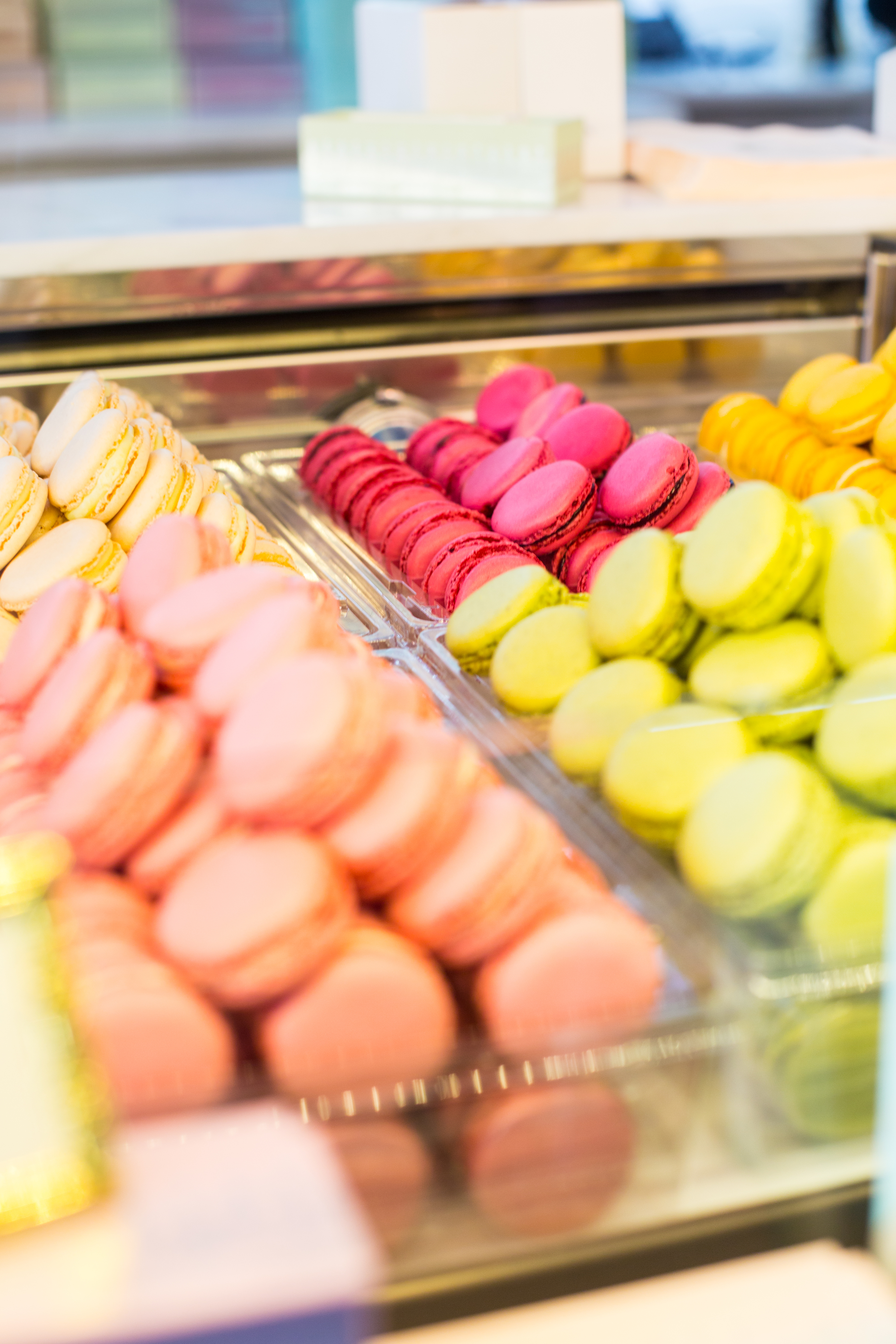A Parisian Reprieve
Ladurée
In the heart of Soho there is a lovely little courtyard that transports you straight across the ocean for a little Parisian reprieve. That courtyard is part of the Ladurée Restaurant, situated behind the telltale counters laden with macarons and eclairs and other dazzling confectionary delights. Indulge in a Parisian-esque brunch of petit fours, eggs benedict, a pot of darjeeling tea, and an oversized raspberry and rose macaron treat, all beneath the rustle of leaves overhead and the polite clink of dishes and polite conversation. The cafe itself is a recreation of the original Paris landmark, known so widely as a spot to see and be seen since its inception in 1862. The menu is full of French favorites, from fois gras to salade niçoise, and every meal I've there had has not disappointed. And obviously you must end your meal with a dessert; Ladurée is, after all, famed as a bakery before all else.
Ladurée solidified the macaron as we know and love it today as a French dessert despite its origins in Italy. The macaron was created in 1533 by the chef of Catherine de Medici for her wedding, who if you know your history was married to the soon-to-be king of France and brought her influence readily into Parisian life. However, the macaron was originally a single simple cookie made of almond powder, sugar, and egg whites. In the beginning of the 20th century, Pierre Desfontaines, the grandson of Louis Ernest Ladurée, made the ordeal a "double-decker" affair by filling them with a chocolate panache and sticking them together. Since then French Macarons have remained the best selling cookie in pastry retail stores throughout France, and undoubtedly have found their place amongst the blogosphere and Instagram-world.
You must also recognize the distinction between a "macaron" and a "macaroon," though the two have very similar overlapping origins (read more here and here). A macaroon is generally made with almond paste and coconut flakes and is a single chewy, almost cake-like cookie. Alternatively, the macaron is composed of two fluffy cookies similar to meringue sandwiched around a dollop of either jam or chocolate or any number of fillings depending on the flavor. Both are equally as delicious, it just helps to know the difference.












